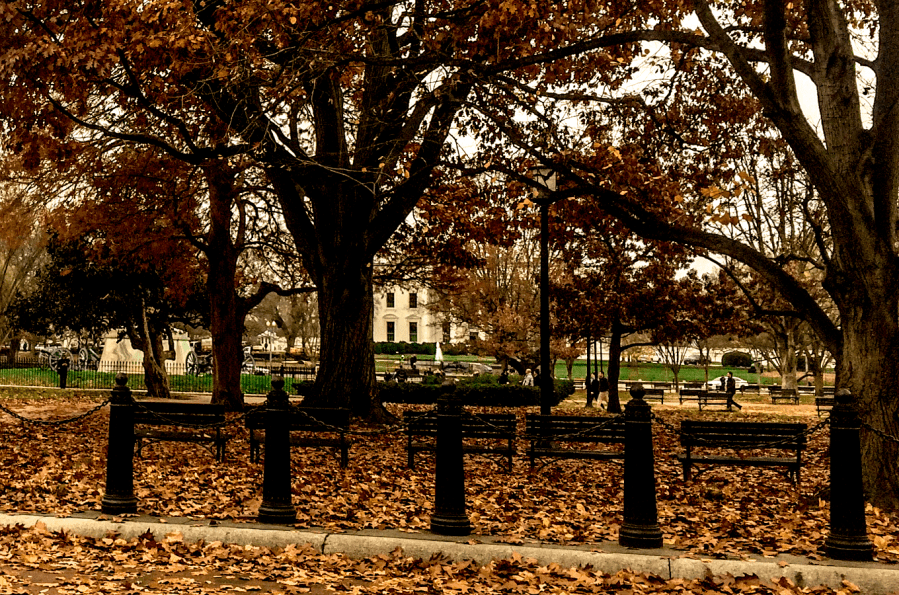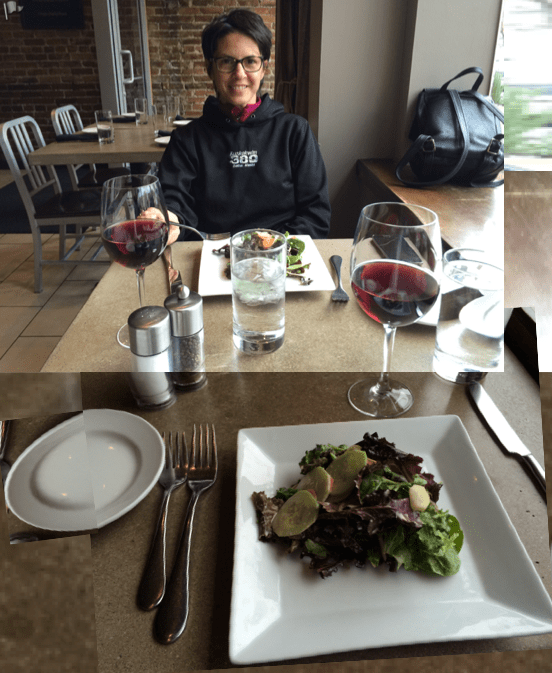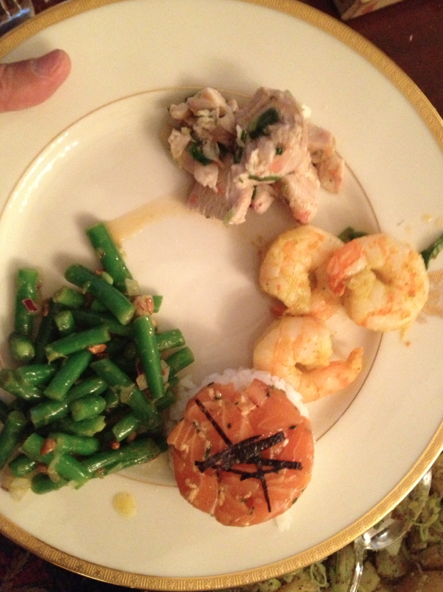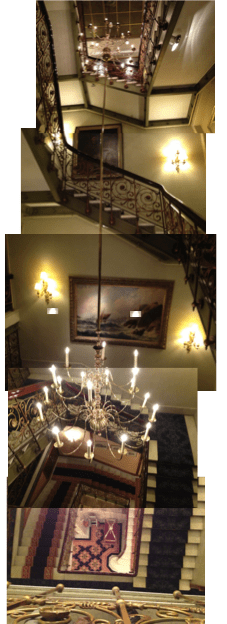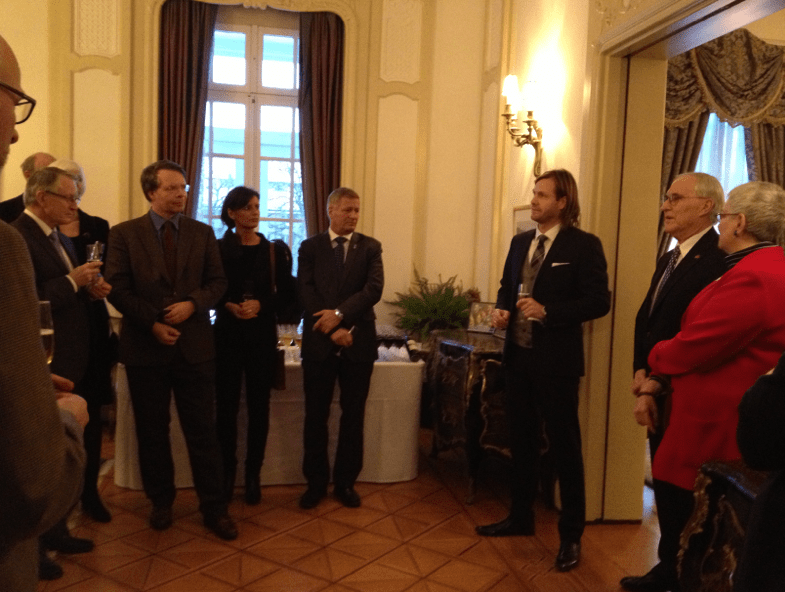- Click to email a link to a friend (Opens in new window)
- Click to print (Opens in new window)
- Click to share on Facebook (Opens in new window)
- Click to share on WhatsApp (Opens in new window)
- Click to share on Twitter (Opens in new window)
- Click to share on Pinterest (Opens in new window)
- Click to share on Tumblr (Opens in new window)
- Click to share on LinkedIn (Opens in new window)
Posts Tagged ‘Washington DC’
DC presentations
Posted in DC presentations, NSF presentation, tagged Arlington, Washington DC on December 2, 2017| Leave a Comment »
Hot Spots
Posted in Paparazzi Ethnography, tagged Washington DC on May 15, 2016| Leave a Comment »
U.S. State Department, Washington, DC, to hear about key priorities of US chairmanship, Arctic Council, 2015-2017.
About an hour prior, the entrance of Alaska’s Congressional members, Representative Don Young, and Senators Lisa Murkowski and Dan Sullivan, introduced a notable stir.
Returning to the state department — identification badges and wall murals.
Lunch on Capitol Hill
Posted in Paparazzi Ethnography, tagged New York, Washington DC on December 7, 2014| Leave a Comment »
embassy reception
Posted in Paparazzi Ethnography, tagged Oslo, Villa Otium, Washington DC on January 15, 2013| Leave a Comment »
1/20: Just leaving Tromsø, heading down to Oslo and looking over a map, wondering what is the best route to the Ambassador’s Residence. We may walk or take a taxi, depending. I will be with Kaare Hague, former Norwegian Consular General to Russia, who is a mentor on my research and for whom I thought the invite might be of interest.
A reception at the American Ambassador’s home on Monday 21 January at 6PM in Oslo. Ambassador Barry White wants to celebrate the inauguration of President Barack Obama. The actual ceremony is in Washington DC that same day at noon (6 hours behind Oslo time). I think the Ambassador’s plan is to invite a few folks over for drinks and to watch the ceremony on television.
It should be fun. If you would like to attend, please let me know sooner than later, so that I can arrange an rsvp — security is tight. I can swing by and pick you up around 5:30PM — or if you prefer, we could meet directly at the embassy.
Norway Fulbright 2012-13 (Oslo)
Posted in Paparazzi Ethnography, tagged Houston, Jinan, London, Oslo, Svolvær, Tromsø, Washington DC on August 7, 2012| Leave a Comment »
8/10: US-Norway Fulbright Orientation….
Where Does One Begin?
Perhaps with Fulbright maven, Ragnhild Sohlberg, Ph.D., of former Norsk Hydro management and Rand specialist to whom, alongside Sonia Mykletun (see bottom), can be attributed the recently established Arctic Research Chair position?

With newly minted Fulbrighters musing on Art and Love in the Oslo Fulbright Office?

We back up and return to our visit at Nobel Institute?

To our roof-top reception following our Award Ceremony?


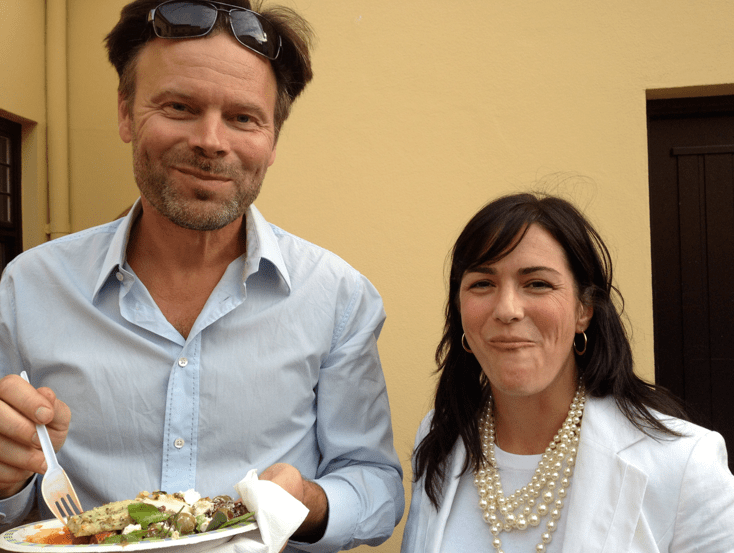

With where Prez B. Obama received his Nobel Peace Prize?
To imagine ourselves at Norwegian Ministry of Foreign Affairs?

After introductions to begin a series of discussions about life in Norway? 
Chatting, down the steps, onward toward ceremony and reception?




Let’s walk alongside past the King’s Royal gardens?
To begin under the celebrated chandeliers?


The paparazzi search beams, yes, for stars of my left and my right?


With the gendered children’s spam (pâté for the sensitive)?
There indeed are so many places to begin, as if to say, how can any one paparazzi ethnographer capture all the fleetings of such ritualized settings?
8/9: Entering into the Fulbright reception:
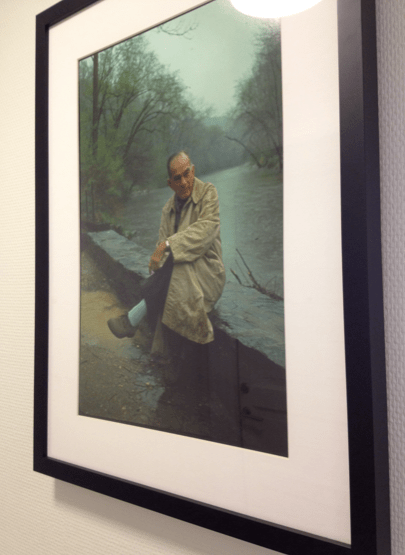
6/23/2012: I was awarded the US-Norway Fulbright Research Chair 2012-2013 at University of Tromsø (yay!). Reading my previous blog, see below, seems like a long time ago that I began the application. And it was! One year ago. I want register here and now that I plan to attend the Fulbright Orientation upcoming in August and to capture that event in paparazzi ethnographic style… 🙂
I recounted the entire saga of the award application to Svetlana L., with whom I had several wonderful conversations in April at Cambridge U. while attending the BASEES conference. Afterward, we met up in London over drinks at the Lanesborough where I poured out the entire story. She confessed to me that my tale was indeed, interesting. Here is Svetlana chatting on Hyde Corner:
To provide one example, I received news of the Fulbright award while in a hotel room in Jinan, China. I was visiting folks at the Department of Anthropology at Shandong U., with the generous offer to take the position as Associate Professor. For several days, I wandered around Jinan wondering how in world I would fit into that city scape, with all its unique food items, such as sea slugs, rose petals, and lettuce, as shown in the image below, taken at a high-end delicacy restaurant.

On the third day of my visit, returning to the hotel from a preview of the apartment that the university offered me as part of the hiring package and after walking out of the shower — a blast furnace of a water faucet, thank the lord — I noticed a new email in my inbox, from the Fulbright Foundation in Washington DC.
It was an eye spot. I paused for a few moments before reading the word: “congratulations”. And I plan to provide some updates right here, especially as I get news of the orientation.
6/23/2011: Last month, in Houston, I had dinner at the residence of Sonia Mykletun, recently Executive Director of the US-Norway Fulbright Program. Toward the end of the evening, she graciously invited me to apply for the newly created US-Norway Fulbright Arctic Chair, launched during her tenure. Sonia’s husband is the Royal Norwegian Consul General, Dr. Jostein Mykletun.
 Both Jostein and I attended the Arctic Oil and Gas North America Conference that week where we were invited as keynote speakers.
Both Jostein and I attended the Arctic Oil and Gas North America Conference that week where we were invited as keynote speakers.
Jostein presented the Norwegian Government’s High North Strategy, since he was Foreign Ministry Ambassador for the High North.
I decided to take Sonia up on her offer to apply for the Arctic Chair and have created here a post to document the process of putting together the Fulbright proposal.
What I find interesting, in fact, are all the threads that come together to make an application happen. In advance of my discussion with Sonia, I had discussed this opportunity with anthropologist Sidsel Saugestad of University of Tromsø (UiT). Initially, I was short listed for assistant professor in her department, though the job went to David Anderson, formerly of U. Aberdeen.
Some months followed and Sidsel and I chatted in SFO at the Anthropological Meetings about my spending time in Norway. And now, we are coordinating on the application.
Another connection at UiT is Dr. Paul Wassmann of the Marine Biology Department who also has joined the Fulbright application effort on my behalf.
Not too long ago, Paul invited me along with early career scholars to Svolvær, Norway, in winter, on a cruise ship traveling the Norwegian inside passage from Tromsø, so that we could talk shop on oil and gas development in the Arctic. The conversations were intense. To cool off, we were provided with our own entertainment, in the form of a salsa band flown in from Barcelona, Spain.
That was an amazing voyage and Svolvær is so beautiful, especially in winter. In fact, there were artists in residence and we attended gallery showings. One of my favorite set of paintings was from Maud Brood, who, a bit of a recluse, became quite animated when talking about her work.
During that trip I came to know quite well anthropologist Carly Dokis, who is wonderfully witty.
We spent all our time just hashing out ideas, intellectualizing our emotional lives, recounting our individual experiences through the language of anthropological texts. It is impossible not to do so when you have spent so much of your life sitting around reading. Having an interlocutor of that caliber, like Carly, made the trip.
But I should not forget the wonderfully clever anthropologist Najune Menka, also in attendance and who originates from Alaska. Najune works at the intersection of science, environmental politics and identity.
What is funny, Carly was living in Calgary, Alberta, where I was also living at the time, having been awarded the US-Canada Fulbright Scholar, North American Research Chair, at the University of Calgary.
The project I am proposing to carry out now extends my research into energy analysts in Norway. For this, many persons I have met so far as part of the US National Science Foundation research, including Arild Moe, Kaare Hauge, Elana Wilson Rowe, will be part of the project.
I have just completed what is nearly a first draft, and I am quite excited about it, and perhaps for this reason, I decided to create this post.
Jacob Grønholt-Pedersen
Posted in Paparazzi Ethnography, tagged Moscow, Washington DC on July 25, 2011| Leave a Comment »

Energy journalists are key players in Arctic natural gas development. We began noticing the influence of journalists when observing the Alaska Governors. Members of the Governor’s cabinet were highly concerned with the reporting of news events.
In fact, within the Alaska Governor Tony Knowles administration (where we began our paparazzi ethnography) we noticed a few journalists highly placed within the administration. They were word-crafters and public spokespersons for the Governor. Persons like David Ramseur, whose career began as an Alaska journalist, but in the final years of the Knowles administration, he became Chief-of-Staff. David recently is serving as Chief-of-Staff for Alaska U.S. Senator Mark Begich. Ramseur kept his cards close to his breast. He often wrote policy speeches for the Governor and kept an eye on daily press releases that we turned out for the Alaska media.
Another journalist who flittered between political appointments and freelancing for the Anchorage Daily News is Larry Persily. Larry is a master wordsmith. Under Knowles, he was Deputy Commissioner of Revenue and coined the term now famously delivered by the Governor, “My Way is the Highway” — which was in response to a policy favoring the Alaska-Canada Highway as the best route for an Alaska natural gas pipeline (should it ever be built).
Larry was hired also by Alaska Governor Sarah Palin in order so that he would not work as a journalist. We met up with Larry in Washington, D.C. recently, to see his new digs, as reflected in this photograph above. He is the Congressionally appointed Federal Coordinator on the Alaska Natural Gas Pipeline Project.
Moving on, in Moscow, we were lucky to meet with the quiet, humble, and high-in-demand journalist for The Wall Street Journal, Jacob Grønholt-Pedersen. Jacob is from Copenhagen. He speaks perfect English, Russian, and Danish. We initially saw Jacob’s writings when he was reporting on the Barents Sea Shtokman natural gas project. We contacted him by email. Here is an image from an internet search of his name.
We met Jacob for lunch on the pedestrian-only Kamergersky Pereulok – a sidestreet and popular hangout in Moscow. In fact, the street abuts the Cambridge Energy Consulting office where we met energy consultant Vitaly Yermakov. Here is a photo of Alex standing next to the Cambridge Energy bronze plaque.


Here is an example of headline by Jacob:
Energy Journalists on the Timing of Events
- The issue of expertise surrounding development of the Barents Sea Shtokman natural gas field is reported upon in the press differently depending on the any one event, meeting or issue taking place. For ecological organizations, it is a chance to inquire into how potential industrial wastes and hazards will be handled. For representatives of Shtokman Development AG (the energy partnership) it is an opportunity to promote how information produced by environmental consultants will be made available. For trade organizations (builders, tenders) in Norway, they consider anxiously how they will be involved in the project.
- The initial article that drew our attention to Jacob Gronholt-Pedersen’s work was printed in the Dow Jones Newswire. It is titled, Russian LNG Aims Face Big Challenges in Arctic Regions, and dated Wednesday, October 28, 2009.
- Main tag line: “Russia’s priority project, the massive Shtokman offshore field in the Barents Sea north of Murmansk—a joint project with France’s Total S.A. and Norway’s StatoilHydro”.
- In this article, Jacob demonstrates his access to expert analysts in the field. He quotes Vitaly Yermakov — Director of Moscow branch of Cambridge Energy; an “analyst” (unnamed source) from UniCredit and Ron Smith — Chief Strategist at Moscow-based Alfa Bank.
- This main issue discussed concerns when the project will move forward at all. And we find printed here various statements by independent consultants or finance organizations who presumably are located somewhere in Moscow and whose comments are specifically limited to timing. Everyone wants to know about the timing of events. These statements on timing (2013, 2015, 2025, never) encapsulate an entirety of expectations surrounding regulatory and economic conditions.
- If you google Moscow Cambridge Energy director, Vitaly Yermakov, his name appears in relation to Cambridge Energy Director in the Washington D.C. office, Matthew J. Sagers, who is author of an academic reaction paper to Milov et. al (2006), (the latter article appearing in the syllabus of Yale anthropologist Doug Rogers on energy in Russia). In addition to working with Yermakov, Sagers also cites in his bibliography an article collaboration with Russian gas economist Valeriy Kryukov, who we had dinner with in Oslo along with Oxford Energy Institute’s Jonathan Stern, at the Petromaks Workshop sponsored by the Norwegian Research Council — the same group who sponsored the Norwegian-Russian Arctic Gas Workshop in Murmansk, titled Petrosam (see below). Both Stern and Kryukov have been publishing for decades on Russian gas developments, together with Arild Moe of Norway’s Fridtjof Nansen Institute (see the post on Moe and Stern below).
- In the article we refer to, Sager responds to the “nature of Russia’s official energy policy” (“ad hoc” rather than “systemic”). He comments primarily on whether Milov et. al are correct in their empirical assessments of oil exports, pricing developments, price deregulation, gas supply, export flows.
- Essentially — what we draw attention to here is that there are various levels of detail entrenched in different spaces (academic journals, dinners, workshops), that bubble up to the surface through the work of journalists and often times in the form of statements about the timing of events.
- The social function of the work of Pedersen, is to write stories in the form of news articles that serve as a hieroglyph, a consecrated form of expert interaction, a condensation of information flow, whose depth is flattened out by publication in the press, but that retains its hold as a source of knowledge because of its lineage, as represented by the various actors cited in text. We suppose the apt metaphor would be a tip of the ice berg. Articles by Pedersen, are like the tip of an ice berg — whose actual dimensions of depth — everyone in the know can recognize by its appearance on the surface of things.
In the event we are awarded our beloved National Science Foundation proposal, we plan to follow up with Jacob in the nearest future….
Energy Czar
Posted in Paparazzi Ethnography, tagged Berkeley, Holmenkollen, Washington DC on March 22, 2011| Leave a Comment »
Recently, I caught up with Energy Czar, Daniel Kammen — a Hero for our time.
Can you imagine?! He’s been invited to the 2012 Oslo Energy Forum as main speaker, along with Bob Dudley, current head of British Petroleum (who we have yet to catch up with), Helge Lund, CEO of Statoil (who we just met there a few months back), and Lee Raymond, Former CEO, Exxon Mobil, etc. and so on.
“Under no uncertain terms,” I informed the Energy Czar — while raising my forefinger skyward, “can you attend the Oslo Energy Forum 2012 without bringing me along.”
Good Grief! That’s StudioPolar‘s backyard!
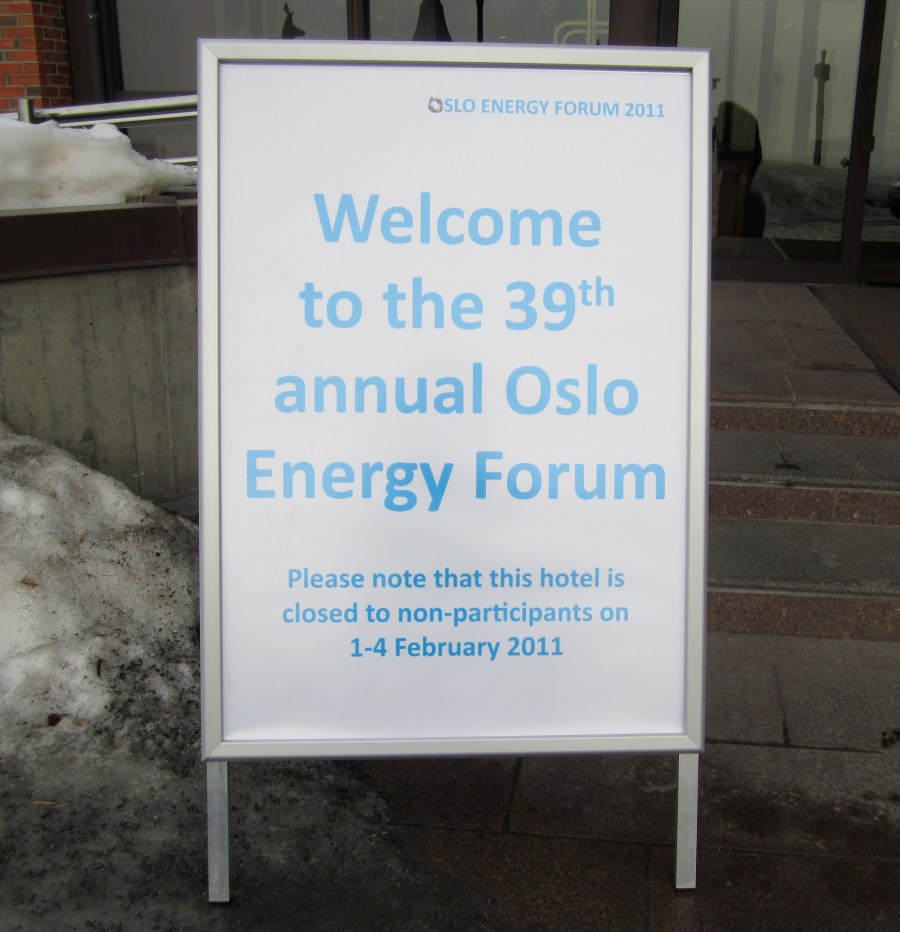
Well, we’ll see. At $15K an entry ticket, to go once in my lifetime should be enough. And I should thank here the US Federal Government for thinking so highly of me to scoot me over there several months ago. But to go again. Now that would be the true test of the Paparazzi Ethnographic master.
Back to the Czar.
First, we chuckled over East Bay Express naming Dan Kammen Most Influential Cal Berkeley Energy Czar for handling the $8 billion portfolio for World Bank Group’s Energy Strategy
As a matter of fact, I checked in on Dan at the World Bank Group (WBG) in Washington, D.C., recently — to provide evidence that Dan was doing just that — handling the WBG Energy Strategy.

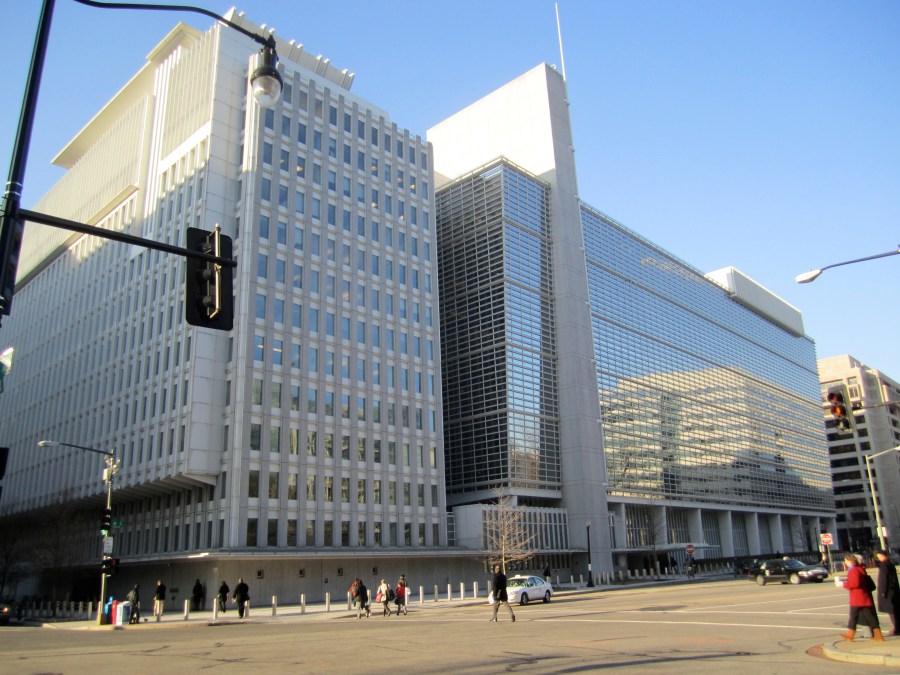
The World Bank Group building is impressive and located in the heart of Washington, D.C.

I managed to get through security with only a raised brow.
Just as I got my feet wet, we were called back out again, for an early lunch with Paul Isbell, Senior Associate at Center for Strategic and International Studies
Paul is entertaining at the table as well.
We ordered wine with the meal.
Ordering such a fancy meal — I got to use fancy silverware — a fork with three prongs, a knife without a serrated edge and a little dent and a spoon with a dent…
World Bank Group is a big castle. There is everything! Dining, Customer Service Center where you get your United Nation’s passport, Health Clinic for travel vaccinations, Mail Department, Graphics Shop, Latte Dispensers, Library, Dry Cleaners, Restaurants, Employee Banking. There is artwork everywhere, and the atrium must be a couple hundred feet high, similar to a cathedral.
It was an interesting experience for a guy like me, coming all the way from a small town called Berkeley. I almost felt like I was hanging out with the big boys. Hey, Wait a New York minute! That’s what we do here!
I attended meetings with a lot of VIPs.

After several days, I realized I could just live there, literally, inside the WBG. Without coming out.
I would not get bored. I could be like a house cat. Roaming, purring, sleeping. Eat late brunches with Dan, visit the Customer Service Center for services, and have plenty of lattes in the atrium. That’s where all the business takes place by the way, right there, sitting and chatting over who’s next in line for big power plant.



Oops! Silly me. I almost got so carried away the WBG lifestyle, that I nearly forgot the tag line of the main story:
WBG declined to allow the Energy Czar to participate in assessment of clean energy alternatives in Kosovo…and to Dan’s credit, the story was splashed all over the news: e.g.,
Battle over Ugly Coal
I guess that’s what makes Dan Kammen the Energy Czar. He’s more than just a fat cat purring in the WBG.



